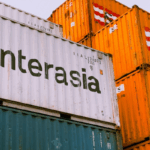On February 1, the Trump administration ended de minimis treatment for imports from China, eliminating the exemption that allowed shipments under $800 to enter the U.S. duty-free with minimal oversight. While this reform may strengthen U.S. Customs and Border Protection’s (CBP) ability to detect high-risk shipments—many of which come from China—it also dramatically increases CBP’s workload. Without scalable improvements in data processing, the policy risks slowing e-commerce and overwhelming CBP. To prevent bottlenecks and ensure effective enforcement, the administration should invest in artificial intelligence (AI) solutions to help CBP efficiently screen low-value shipments from China.
The stakes are high. In 2024, the U.S. imported 1.36 billion de minimis shipments, with China accounting for 58 percent of them in 2021. Now, CBP must inspect hundreds of millions more shipments under standard procedures, far exceeding its current capacity. As digital shipment entrepreneur Ben Tzion explained, “It’s about 1,000 times more than [CBP is] capable of dealing with right now.” The problem isn’t just volume—low-value shipments from China also present some of the highest security risks, including counterfeits, illicit goods, and products made with forced labor. Roughly 85 percent of CBP’s cargo seizures come from de minimis shipments, and 90 percent of goods seized for intellectual property violations originate in China. To manage this influx, CBP should rapidly scale its capabilities through in-house automation and outsourced AI-driven solutions.
CBP has a timely opportunity to upgrade labor-intensive data analysis tasks to more automated systems. The recently created Department of Government Efficiency (DOGE) has a mandate to “improve the quality and efficiency of government-wide software.” In-house, CBP’s priority should be information technology (IT) modernization efforts. On this, CBP has been playing catch-up, having only finalized its digital transition from a mainframe IT system to the cloud in 2024, long after the 2011 Federal Cloud Computing Strategy.
CBP should also focus on in-house data ingestion systems that can incorporate government software, private sector solutions, classified information, and open-source data to their full potential. CBP has a foundation: in its AI Use Case Inventory, CBP describes “an advanced AI and machine learning model to enhance risk assessment in inbound cargo” and a system that “simplifies and enhances data annotation for machine learning.” Writing about government agencies’ challenges in analyzing the vast amounts of data they collect in Foreign Affairs, China and trade expert Peter Mattis recommended that “the intelligence community [(IC)] should create a unit to run projects that address the bottlenecks that make it hard for agencies to widely adopt digital technologies and artificial intelligence.” CBP should replicate this proposed approach.
On the procurement side, some of the pieces are already in place to help CBP process the increased volume of shipments following the partial end of de minimis. In 2023, CBP awarded the tech startup Altana a contract to provide supply chain intelligence that CBP analysts began using “to determine high-risk areas for trade targeting,” with a focus on forced labor. While these types of products might not replace all of CBP’s processes, they can assist analysts with lead generation. More importantly, for long-term solutions to risks posed by e-commerce shipments, these types of contracts encourage the development of an emerging supply chain intelligence sector.
CBP should also leverage its procurement power to build demand for products that utilize similar inputs: open-source data ingestion, AI and natural language processing technology, and Chinese Internet data scraping capabilities. For example, to mitigate against counterfeit goods, CBP could procure a software-as-a-service (SaaS) product that can scrape product images and other product fingerprints, such as packaging details, at scale across U.S. and Chinese e-commerce platforms to feed into an algorithm that can detect discrepancies and identify potential counterfeits. The technology already exists for buyers who want to compare prices across platforms and marketplaces concerned about counterfeits. A CBP contract—and the resulting SaaS product that wins it—might start small but would spur competition and innovation in the necessary direction.
CBP’s contract with Altana—worth approximately $10 million over three years—demonstrates the potential for strategic private sector partnerships in handling de minimis enforcement. Given that CBP’s Office of Information and Technology has an annual IT budget of $1.8 billion, the agency could easily scale up similar procurements without significantly increasing headcount. If CBP allocated approximately 0.5 percent of its IT budget (around $9 million annually) toward additional private sector tools, it could fund at least three similar contracts that cover other risks posed by low-value imports from China: counterfeits, tariff evasion, and narcotics trafficking. Compared to the costs of a mass hiring strategy, targeted investments in private-sector SaaS solutions are relatively cost-effective.
The partial end of de minimis poses a major challenge for CBP, but AI can help the agency identify high-risk shipments without a massive staffing surge. To make this policy shift effective, the Trump administration has two choices: turn CBP into the largest federal agency or make it a leader in government technology. In the age of AI, the right path is obvious.
* Eli Clemens is a policy analyst focusing on e-commerce and retail technology policy at the Center for Data Innovation. Previously, he worked as an open source intelligence analyst and served as a Peace Corps Volunteer in China. He holds a Master of International Affairs degree from Columbia University’s School of International and Public Affairs and a B.A. from New York University.
Source: Center for Data Innovation











